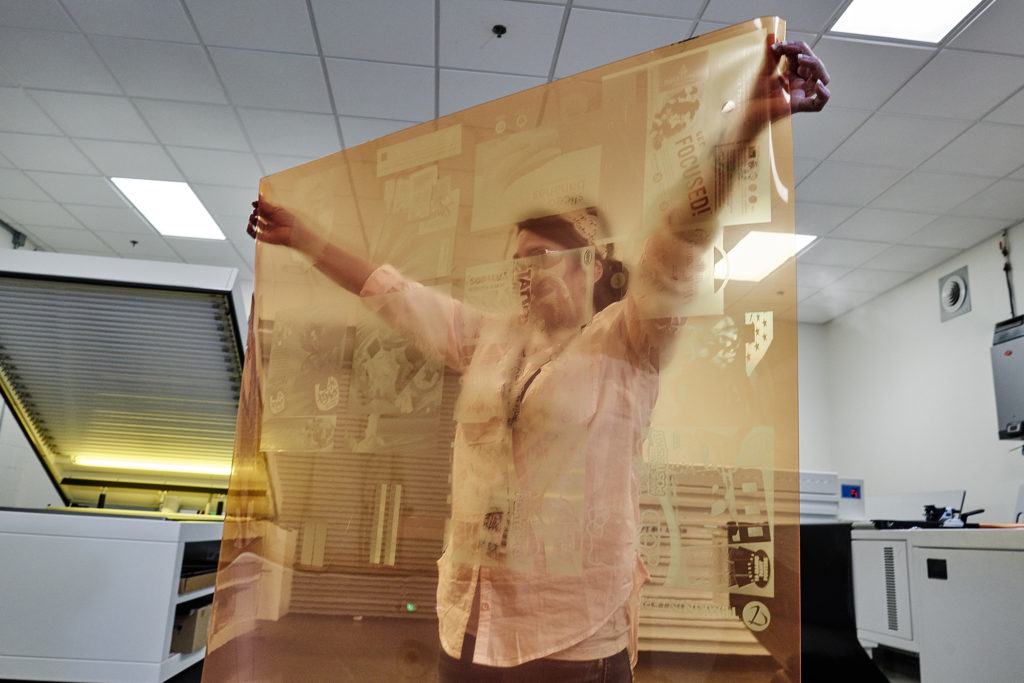Passing the test – with flying colors
Awards judge, Clemson University’s Chip Tonkin explains what makes flexo a great teaching tool, why flexo has such a strong future, and what broke his reluctance to be a print judge…
 I don’t tend to jump at the idea of judging print awards: I’ve been on lots of committees, and I’m not super-interested in spending my time just looking at print jobs under a loupe. But when Miraclon explained the goal of the Global Flexo Innovation Awards, it was different. It’s not simply about judging the perfection of the registration and the dots. It’s about how innovative the product is. I want to look at work that has a purpose: print that’s solving a problem.
I don’t tend to jump at the idea of judging print awards: I’ve been on lots of committees, and I’m not super-interested in spending my time just looking at print jobs under a loupe. But when Miraclon explained the goal of the Global Flexo Innovation Awards, it was different. It’s not simply about judging the perfection of the registration and the dots. It’s about how innovative the product is. I want to look at work that has a purpose: print that’s solving a problem.
I latched on to flexo in the early 1990s. I went to Clemson University, South Carolina, and got a bachelor’s degree in mechanical engineering, then a masters in graphic communications.
“We’d go to the FTA conference and we were doing stuff nobody else was doing, even as students.”
At the time, flexo was largely regarded as a rubber stamp, ‘this side up’ level technology. But it felt like all the major problems in offset and other print technology had already been solved, and I really saw the difference we could make in flexo.
We had a label press at Clemson, and we used it to push the boundaries: how high a line screen we could do; figuring out how to hold highlight dots; we even started playing with extended gamut. We’d go to the FTA conference and we were doing stuff nobody else was doing, even as students.
A transformational technology
I’ve seen some big shifts in my time working with flexo. After college I joined the R&D team at International Paper (IP) more or less as their flexo expert, acting as a consultant to their customers, packaging plants and paper mills.
For my entire time at IP, lots of customers – whole markets even – wouldn’t even consider flexo. They saw it as going back to a horse and buggy having driven a sports car. But that’s really changed.
The quality of the platemaking tech transformed around 10 years ago. The KODAK FLEXCEL NX System deserves a lot of credit for this transformation because it drove everyone in platemaking to up their game. With modern imaging and plate technologies, the flexo color separation process, which used to take so much time, can truly be fully automated. That makes pre-press much more efficient, the results much better, and flexo far more able to compete.

Training the next flexo generation
These days I wear a couple of hats. I’m Director of the Sonoco Institute of Packaging Design & Graphics, working in research and supporting companies with their plates and inks; I’m also additional chair of Clemson’s Graphic Communications department, where I’m very student-focused. We have about 350 students, and flexo is a major part of the program, the same program I went through as a graduate student.
Flexo is a really good tool to teach problem-solving and critical thinking. It takes them through a hard process, with lots of steps that have to be done right. You can’t be innovative or make any sort of contribution to a process unless you understand the foundations and think through causes and effects.
Going through the tasks of designing jobs, doing prepress, making and mounting plates, running the press, taking measurements, and troubleshooting the job, gives students this experience as well as the confidence to apply this problem solving approach to all sorts of other areas.
Flexo is tangible, so it’s easy to grasp what’s going on. It prepares people, either to go into this industry, or to work in any creative process, and we use it on a daily basis.
The people making flexo happen
After listening to a guest speaker discussing flexo, our students are always surprised about (and even in disbelief of) their obvious passion for flexo printing. But it is not an act, and I’ve noticed the same thing all the way through my time in the industry: at trade shows there’d always be these flexo geeks staying up all hours of the night in bars arguing about things like minimum dots and anilox cell measurement techniques.
“Flexo still has a tremendous advantage over digital in many areas. As we move forward with targeted marketing and just-in-time production, digital will play a larger and larger role, but for the foreseeable future it will be together using flexo as part of a hybrid model.”
I think this passion grew out of that particular time in the print industry – the pace of change happened so rapidly in such a relatively small community, and the people that were involved then really felt like they made such a big difference to the entire print industry. They changed what flexo could do. It meant flexo provided a set of technical challenges which were solvable, and was approachable by almost anybody with some basic skillsets, curiosity and determination. That was really fun to be involved with.
Where flexo fits
In the early 2000s, I was convinced flexo was dead, so I started to focus much more on digital. But I was wrong. Flexo still has a tremendous advantage over digital. As we move forward with targeted marketing and just-in-time production, digital will play a larger and larger role, but for the foreseeable future it will be together with flexo as part of a hybrid model.
Functional print seems an inevitable example. If everyone in the supply chain could scan a serialized code on every package, it would solve a lot of problems, from traceability to counterfeits. Digital will be a big part of that. And it’s going to become easier and easier to mix and match flexo and digital as needed.
“In these scenarios, using variable print over long runs, you’ll need to print most of it with flexo to keep costs down.”
Elsewhere e-commerce will have a massive impact on packaging. Retail packaging is still mostly designed from the perspective of how a retail shopper will react to it on the shelf. But there’s already a massive difference in how people shop online and what their expectations are of the product once it gets home.
So, brands will have two goals in mind for their packaging: what’s it going to look like in someone’s pantry, and how will that drive future purchases from the same brand? That’s a set of equations that I don’t think is being fully looked at right now.
It’s reasonable to expect companies offsetting some costs by having targeted marketing on their packaging, so we may see lots more ads with variable promotions, like when you open Facebook and you get targeted ads.

In these scenarios, using variable print over long runs, you’ll need to print most of it using flexo to keep costs down.
The sustainable future
The other big trend is sustainability. Again, flexo is well positioned, because it’s more substrate-agnostic than digital. But the pandemic has put that on hold for now – no one’s talking about anything beyond what we have to do to survive right this second. But I think the sustainability focus is still alive and well – it will just be delayed for another 6 months or so.
For the packaging industry, the pandemic has turned this year into one of feast or famine. Some of my friends’ businesses are struggling; others are operating at 200% of what they did last year.
“There’s a lot of cool stuff going on. I hope the awards will show me what’s possible – and expose me to things I otherwise wouldn’t even know about.”
Wearing my department chair hat, I’m a little frustrated there’s not more hiring. I know there’s a bunch of graduates looking for jobs, but companies at 200% productivity aren’t hiring anyone. I understand – they don’t know what’s coming – but if you’re a company that’s doing well, this is the time to invest, to set yourself up to do even better next year.
Pandemic aside, this is a great time for flexo. There’s a lot of cool stuff going on. I hope the awards will show me what’s possible – and expose me to things I otherwise wouldn’t even know about.
Chip Tonkin is the Chair of the Department of Graphic Communications and Director of the Sonoco Institute of Packaging Design & Graphics, Clemson University. Find out more about the independent judging panel for the Global Flexo Innovation Awards.